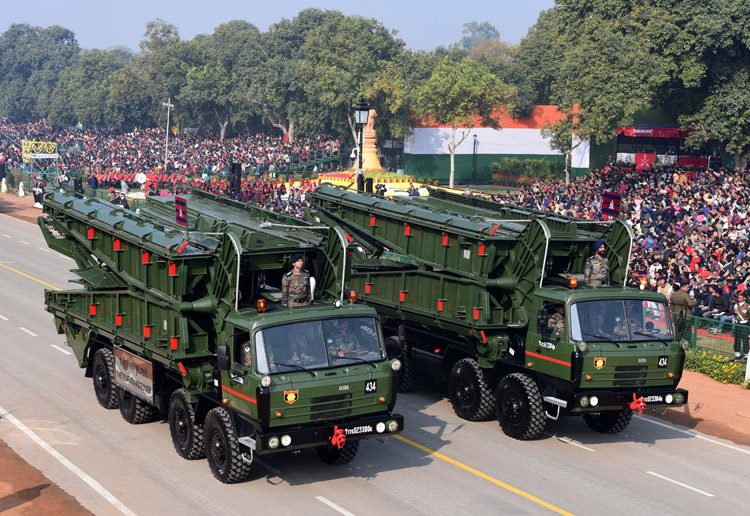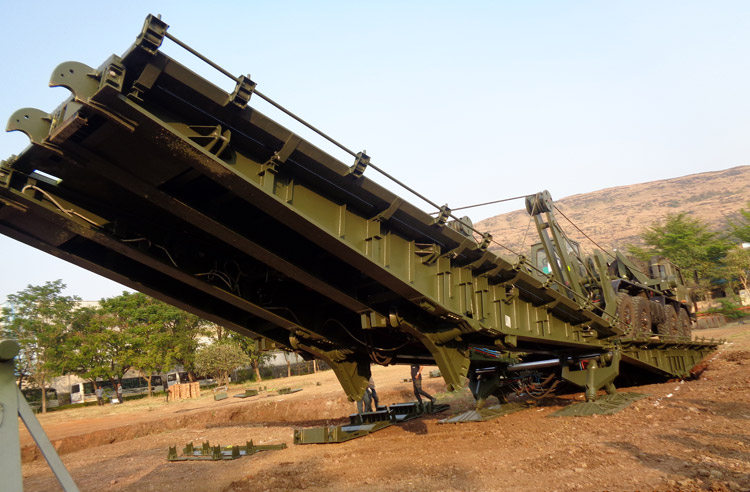INDIAN ARMED FORCES CHIEFS ON OUR RELENTLESS AND FOCUSED PUBLISHING EFFORTS

The insightful articles, inspiring narrations and analytical perspectives presented by the Editorial Team, establish an alluring connect with the reader. My compliments and best wishes to SP Guide Publications.

"Over the past 60 years, the growth of SP Guide Publications has mirrored the rising stature of Indian Navy. Its well-researched and informative magazines on Defence and Aerospace sector have served to shape an educated opinion of our military personnel, policy makers and the public alike. I wish SP's Publication team continued success, fair winds and following seas in all future endeavour!"

Since, its inception in 1964, SP Guide Publications has consistently demonstrated commitment to high-quality journalism in the aerospace and defence sectors, earning a well-deserved reputation as Asia's largest media house in this domain. I wish SP Guide Publications continued success in its pursuit of excellence.
- Operation Sindoor: Resolute yet Restrained
- India’s Operation Sindoor Sends a Clear Message to Terror and the World – ‘ZERO TOLERANCE’
- Japan and India set forth a defence cooperation consultancy framework, talks on tank and jet engines
- Terrorist Attack in Pahalgam in Kashmir: Unfolding a long surgical war against PAK
- Lt General Pratik Sharma takes over Command of Indian Army's Northern Command
Modular Bridges
The indigenously-designed and manufactured modular bridges shall have many advantages over the MGB such as increased span, less time for construction and mechanical launching with retrieval capability
 |
The Author is Former Director General of Information Systems and A Special Forces Veteran, Indian Army |

On February 8, 2023, the Ministry of Defence (MoD) signed a deal with Larsen and Toubro (L&T) for 41 modular bridges a cost of 2,585 crore. These bridges have been designed by the Defence Research and Development Organisation (DRDO) for the Indian Army. The media quoted an unnamed MoD official saying, “Each set of these game-changing modular bridges shall consist of seven carrier vehicles based on 8x8 heavy mobility vehicles and two launcher vehicles based on 10x10 heavy mobility vehicles. Each set shall be capable of mechanically launching a single-span fully decked 46-metre assault bridge. The bridges can be used over various types of obstacles like canals and ditches, with quick launching and retrieval capabilities. The equipment is highly mobile, versatile, rugged and capable of keeping pace with wheeled and tracked mechanised vehicles.”
The modular bridges will replace the manually-launched medium girder bridges (MGB) that are currently being used by the Army’s Corps of Engineers. The indigenously-designed and manufactured modular bridges shall have many advantages over the MGB such as increased span, less time for construction and mechanical launching with retrieval capability. These will give a major boost to the bridging capability of the Army on the western front. According to the MoD, the project will showcase India’s progress in designing and developing world class military equipment and pave the way for enhancing defence exports to friendly countries.
The project will showcase India’s progress in designing and developing world class military equipment and pave the way for enhancing defence exports
The Indian Army has been primarily using the ‘Sarvatra’ bridging equipment designed and developed by the DRDO other than the Bailey Bridge and the floating Pontoon bridges. Characteristics of pontoon bridges are as follows: carrying capacity - 20 tonnes, 60 tonnes or after modification up to 80 tonnes; maximum length of the bridge made of one set - 382 metres for 20 tonnes and 227 metres for 60 tonnes; useful width of the pontoon bridge for crossing vehicles - 3.29 metres for 20 tonnes and 6.5 metres for 60 tonnes; maximum length of the ferry vessel - 53 m; maximum carrying capacity of the ferry vessel - 150 tonnes, and; useful width of the ferry vessel - 6.5 metres.
The Sarvatra project was sanctioned in 1994 and completed development in October 1999 at a total cost of 2,30,000,000. It was approved for production in March 2000 after trials. The Sarvatra is replacing the East European PMS Bridges in the service of the Indian army, which requires 57 Tatra vehicles to bridge 100 meters. In contrast, the Sarvatra, with just five Tatra trucks, bridges 75 meters. At 6,00,000,000 per set, the PMS costs almost three times as much as a Sarvatra.

The DRDO-developed ‘Sarvatra’ is a 75 metre long multi-span mobile bridging system consisting of five scissors bridges made of aluminum alloy with a span of 15 metres each mounted on separate mobile platforms. Each mobile platform is a modified Tatra T-815 VVN 8 x 8 chassis, drivable from both ends by having an additional small cabin with requisite driving controls. In addition, a microprocessor based control system is utilised to deploy and operationalise the entire system in less than two and half hours.
Provision of the new modular bridges will improve the combat efficiency of the Army, since these modular bridges are lighter, are easy to be launched mechanically and can be deployed in a faster timeframe
When the 15 metre long scissors bridge is opened out, it is fitted with adjustable trestles to enable a number of units to be used to bridge wet and dry gaps. All five sections are laid to provide a total bridge length of 75 m providing a roadway of four metres. The bridge can be launched or recovered from either end. With the help of telescopic legs, the height of the bridge is adjusted from 2.5 metres to 6 metres so that it is not easily visible from afar. A 20 metre variant of the Sarvatra bridge system capable of bridging a gap of 100 meters has also been developed.
Provision of the new modular bridges will improve the combat efficiency of the Army, since these modular bridges are lighter, are easy to be launched mechanically and can be deployed in a faster timeframe. Though no timeframe has been announced for delivery of the 41 sets of modular bridges, they do provide a boost to ‘Atmanirbhar Bharat’ and ‘Make in India’. If exports of these modular bridges also get going, it would add to the concept of ‘Make in India, Make for the World’.





